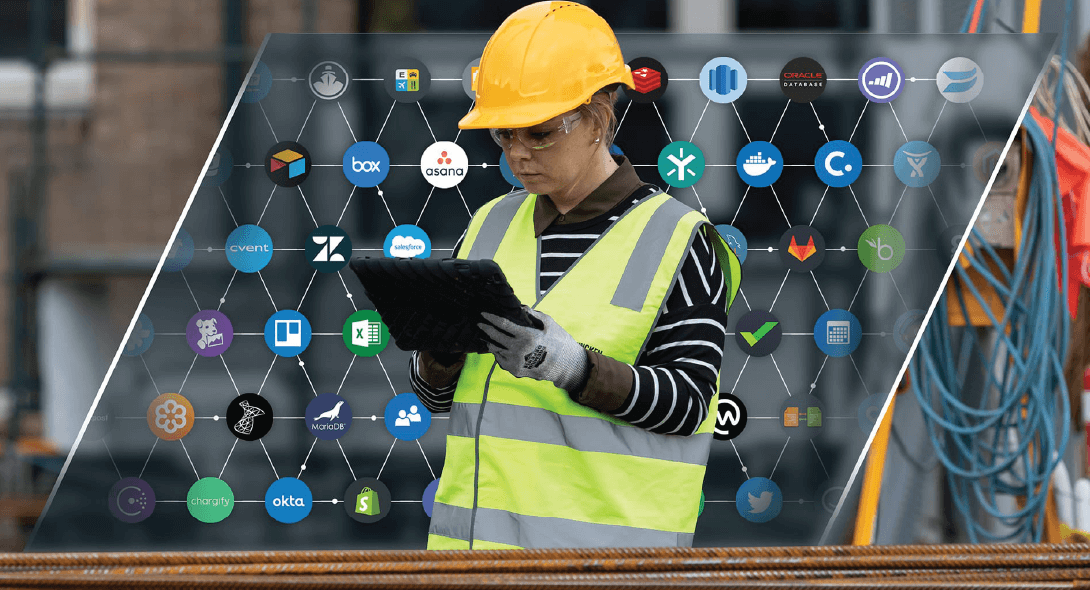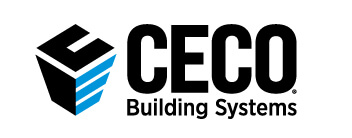How Software as a Service (SaaS) Will Revolutionize Your Business
Posted on November 18, 2021 by Ceco Building Systems
It’s been said that the construction industry lags in terms of adopting technology and embracing the digital revolution. It’s not an uncommon sentiment, but it’s also not exactly accurate. Architects, engineers, and builders have accomplished some of history’s greatest, groundbreaking feats of ingenuity – and they still do it every day. However, there is still a disconnect between our industry and technology. Today, we’re going to get to the bottom of it.
Disparate Reports
McKinsey & Company reported venture capital investment in construction tech has grown far more than overall venture capital investment and has doubled in the last decade. Yet other reports from the same firm suggest construction productivity ranks extremely low due to its lack of digitization. Venture capital investment is high, but industry-wide adoption of the technology invested in is – so far, at least – low. How can we square these contradictory facts?
Connecting the Dots
Construction has always been and always will be an inherently human business. Deals are made on handshakes. Relationships between owners, suppliers, designers, and builders often stretch across generations, weathering storms and trends that ravage other industries. It’s a collaborative industry built on a foundation of trust. So, in an industry where everything hinges on human connection, it’s understandable that there will be some reluctance to “go digital.” Almost by definition, “technology” is essentially antithetical of “human.” Digital solutions can feel sterile and make relationships feel distant.
At Ceco, we understand the reluctance, but the technological and software-as-a-service (SaaS) solutions out there today are an entirely different animal from the desktop-bound, computer-based software of yesteryear that made us feel shackled to desks and disconnected from our colleagues and peers. Today, the fundamental goal of SaaS platforms is connection and communication – the very foundations of our business, and foundations that were complicated and compromised by the global pandemic.
According to The UN, by 2060 we’re likely to add 2.5 trillion square feet of buildings — equivalent to an entire New York City each month for the next 40 years. That begs two questions: How can we more efficiently manage such an immense amount of construction, and how much of that margin can you own? Two questions, one answer. Read on for more.
Participation Atrophy
If your company operates like most in our industry, you oversee a vast landscape of decentralized work and information. Most large firms have as many as a dozen different digital, legacy or even paper-based tools for project management, financials, scheduling, operations – you name it. When communication occurs, it’s in siloed teams and isolated, opaque channels. Texts or emails between a few people might accidentally leave out a crucial person or critical information. And as you know, when miscommunication and errors from the preconstruction stage make it to the jobsite, they are likely to be amplified into mistakes, rework and change orders that can cost millions.
An Analogy
Imagine a full symphony orchestra. As if each team or trade in construction, each section – strings, horns, percussion – has its own leader and sheet music or instructions. Within each section, each player might have slightly different roles and parts. Standing at the front, the conductor has the score – every player’s part combined on a single musical document. When there are changes, they’re all made together and are reflected in the score. Everyone knows and understands. And when changes create problems, they’re immediately obvious.
Products like Autodesk’s Construction Cloud and Procore are designed to accomplish the same idea – and much more – for the construction industry. Our business is built on collaborative connection and communication, and these platforms put you on the innovative forefront of the newest, fastest and easiest ways to stay connected – and to connect every aspect of your business.
Every little part of a project can hinge on multiple other parts. For mere mortals, comprehending it all – especially as changes are taking place – is impossible. Until now, it was often a matter of guesswork, guts, and luck. But taking advantage of platforms like these can give you a real-time view into the financial health and schedule of all your projects.
All in One Place – But Everywhere at Once
When all your data, contacts, contracts, people, and information are digitized and centralized into a cloud-based platform, you get visibility and control over all of it from anywhere. Chances are that your projects already generate a ton of data. These platforms connect the data, put it to work and use it to drive insights, visualize trends, predict future income and more. Stakeholders need accurate and complete information to make decisions, and this gives them a real-time finger on any project’s pulse. When your teams all have access to the same, accurate information, they can efficiently and accurately develop forecasts, enhance cash flow projections, and win competitive bids. That’s where real-world productivity can shoot through the roof.
If this sounds overly technical, here’s the short, sweet, layman’s version. Everything will be laid out in front of you: project health, budget, timeline, payments, supply scheduling, and so many more details and variables. Like a conductor standing before an orchestra, you can test out a tweak or a change to see how it affects the entire scope.
The Future is Here
Another tech tool construction companies are using to forge new paths of connectivity and collaboration is in the building information modeling (BIM) realm. The more stakeholders and teams you can have looking at the same design – and the earlier you can do this in the process – the smoother the project will go and the larger your margins become. Dallas firm HKS created an 864-square-foot collaborative virtual theater, complete with a 10×20-foot projection screen and workstations so everyone can get in the same room and tackle a project and its details at once.
While such ambitious BIM CAVEs (computer-aided visual environments) aren’t realistic for every organization, Revit and other collaborative cloud-based environments allow teams to collaborate on 3D models in real time, making critical decisions and merging structural, MEP and architectural models to predict and eliminate clashes.
Stay On the Jobsite Even When You’re Away
While much of the workforce went virtual during the pandemic, builders and tradesmen can’t really do their work over Zoom. However, the virtual approach has had an impact on the jobsite. Using artificial intelligence, OpenSpace creates a fully navigable, virtual version of your construction site. All it takes is a 360-degree camera strapped to a builder or site manager’s hardhat as they make their way through the site. The camera automatically records the environment and uploads it to the cloud, where computer vision and machine intelligence organize and stitch together the photos, then map them to project plans. This allows stakeholders to monitor progress remotely make decisions and communicate about issues. It also effectively reduces the number of people on-site and provides a digital record of progress in case any problems or conflicts arise.
Going the Distance
Similarly, Disperse uses 360-degree cameras to create a digital twin of the site, helping project managers spot issues before they escalate, but also uses face recognition technology to quantify and analyze social distancing on the jobsite. Additionally, disperse combines schedules, 3D models, drawings, and weekly on-site snapshots to help give yet another real-time view into a project – viewable from anywhere at any time.
Construction has seldom shied away from modern technology when its benefits are clear and tangible, and it’s certainly clear that many of the latest developments and breakthroughs from the tech world will create tangible returns by helping the construction industry drastically improve what it’s always excelled at: connect, collaborate, and communicate.


